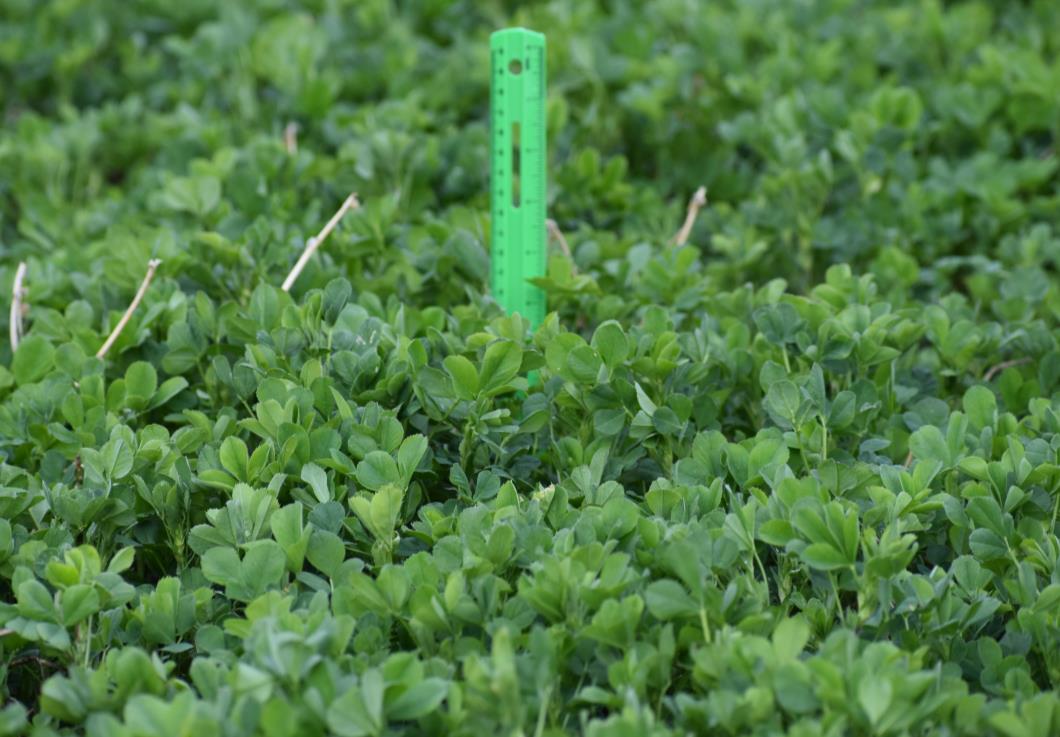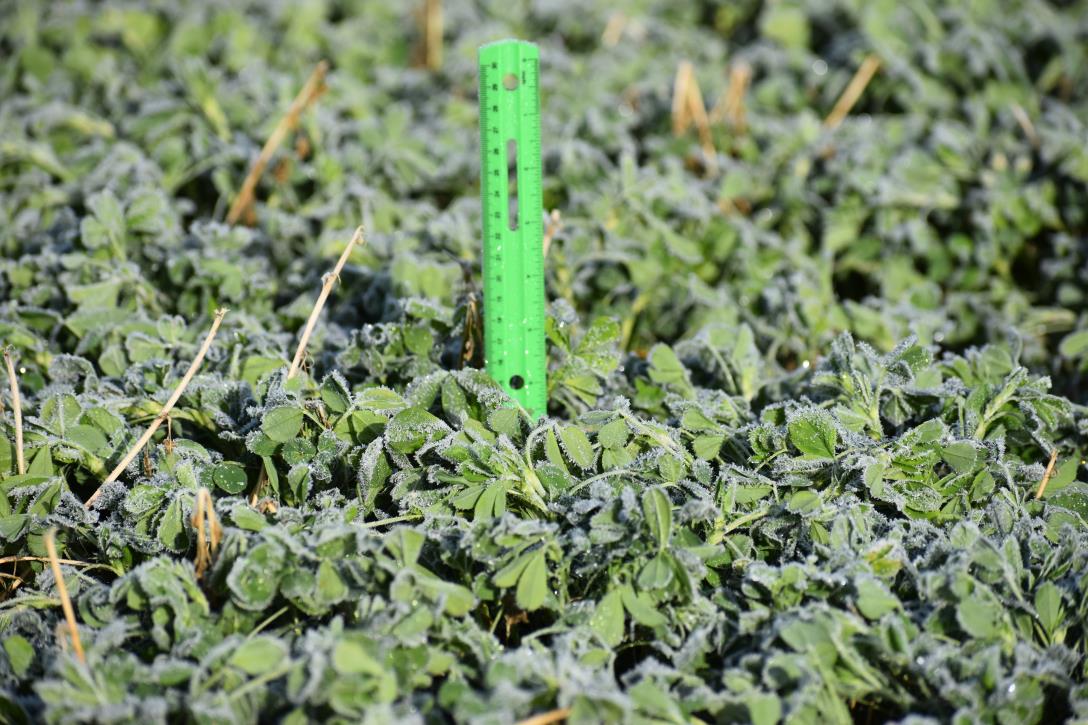Should I apply alphajoule™ after a frost?
Cold temperatures in early spring can cause moderate to severe frost damage to alfalfa, causing potential yield loss and/or development delay. It is important to know the options you have available to help repair and save damaged plants. Making a decision whether to “do nothing” and let mother nature take its course, or to take action can be difficult.

Alphajoule biostimulant is a mix of genetically identified and patented microorganisms selected to stimulate or support plant growth and physiology. Alphajoule can lend mother nature a helping hand to revitalize your frost damaged alfalfa acres.
Potential Key Benefits:
- Accelerated axillary bud growth and initiation
- Accelerated root reserve replenishment
- Maintains forage quality if harvest is delayed
- Boosts performance of cool season grasses in mixtures with alfalfa
- Influences rate of post-harvest green-up of the next crop
- Stand life and rotation implications


After Multiple Frosts: Photo was taken on April 21st, 2021 48 hours after the first frost. Note the deterioration of the once fast growing canopy.
Early Season Frost Impact By Cutting
First: Delayed harvest, reduced yield and forage quality
Second: Depleted root reserves, delayed green-up and number of crown buds released
Third-Fifth: Slowed and reduced performance
How does alfalfa recover from frost damage?
If alfalfa has been damaged by frost, the growing points have been killed, but the alfalfa will form new buds at lower leaf junctures (axillary buds) and continue growing (first cutting might be delayed). Alfalfa may demonstrate some horizontal growth. Mowing existing top growth will not enhance recovery.
Alphajoule will allow the plant to enhance the axillary branches to rescue lost yield & maintain forage quality.
Alphajoule management suggestions for ease of application & best results:
- Apply as re-growth axillary buds emerge. May be 5 to 7 days after the last frost event
- Best results can be expected when there’s a 21-day interval between application and harvest
- Alphajoule can be applied via ground sprayer, aerial or fertigation
- Apply with 10 gallons of clean, nonchlorinated water, use large orifice nozzles and low pressure to protect bacteria viability during application
- Be sure the applicator has been flushed and is clean of chemicals and/or fertilizer residue
- Alphajoule can be applied in a tank mix with micronutrients except copper and most insecticides. Always do the jar test to verify compatibility. DO NOT tank mix with fungicides
- When ever possible, leave check strips to evaluate performance
Application Rates:
- A case of alphajoule covers 20 acres
Alfajoule biostimulant foliar-applied is available through YieldMaster Solutions. To learn more about how it works, use rate, or to secure your order while supplies last, contact your YieldMaster Solutions representative today, or visit our Alfajoule product page.
For additional resources on managing potential frost damage, check out “Frost Damage to Alfalfa”, by University of Wisconsin-Extension.

